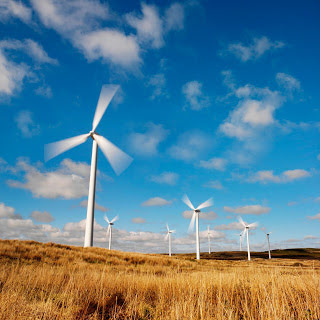Moreover, in August, the Nature Conservancy's Tallgrass Prairie Preserve launched a fight to block construction of a 68-turbine wind farm in the northeast corner of the state, citing its potential adverse effect on the habitats of local birds and grouse, including the greater prairie chicken. Simultaneously, tribal leaders of the Osage Nation oppose construction of a wind farm in Osage County; the tribal members, who own most of the mineral rights in the area, cited concerned that the wind farms could interfere with oil and gas development.
Wind power opponents finding fertile ground in Oklahoma
Posted in Blog article
Recent actions by federal regulators, state lawmakers, military installations, oil and gas interests and environmentalists may be making the Oklahoma regulatory terrain increasingly difficult for wind developers to navigate.
In April of this year Gov. Mary Fallin signed two bills that ended the last large tax credit for wind generation and tightened the requirements for registering private-use airfields near wind turbines. Under the signed legislation, wind farms that started producing energy after July 1, 2017 could not claim the state's zero emission tax credit program, originally set to expire in January 2021. The program, which pushed claims from $3.7 million in 2010 to $113 million in 2014, helped Oklahoma become the fourth-largest in the country by wind capacity, with more than 6,600 megawatts. Last year, about 25% of the state's electricity came from wind generation.
Federal actors have gotten involved as well. Military leadership at Vance Air Force Base near Enid and Altus Air Force Base in southwestern Oklahoma also see new wind developments as encroaching on their interests. They want to keep the airspace open for trainings out of safety concerns, as well as to facilitate future drone testing. Latching on to these concerns, Oklahoma lawmakers are considering a bill that would require new wind farms to get approval from the state aeronautics commission - another proposal would require the state military commission to approve the development of new wind farms.
Disagreements over access to the state’s land isn’t new. Over the past fifteen years legal conflicts between wind developers and (especially) oil and gas companies who had leased mineral rights culminated in the Oklahoma Wind Energy Development Act, which went into effect in 2011 and established notice requirements for landowners and a process to decommission wind farms.
Despite these headwinds, American Electric Power (AEP) announced on July 26 the $4.5 billion Wind Catcher Energy Connection project. The project will involve 800 GE wind turbines at an under-construction Invenergy wind farm straddling Cimarron and Texas counties in the Oklahoma Panhandle. A dedicated, 765-kilovolt tie line will take the renewable energy about 350 miles to a substation in north Tulsa for exclusive use by PSO and Southwestern Electric Power Co., or SWEPCO.
While the launch of the Wind Catcher project bolsters the outlook for wind power remaining a viable force in Oklahoma, recent events suggest that future Oklahoma wind project developers may need to carefully consider the implications of a rapidly evolving regulatory environment.



